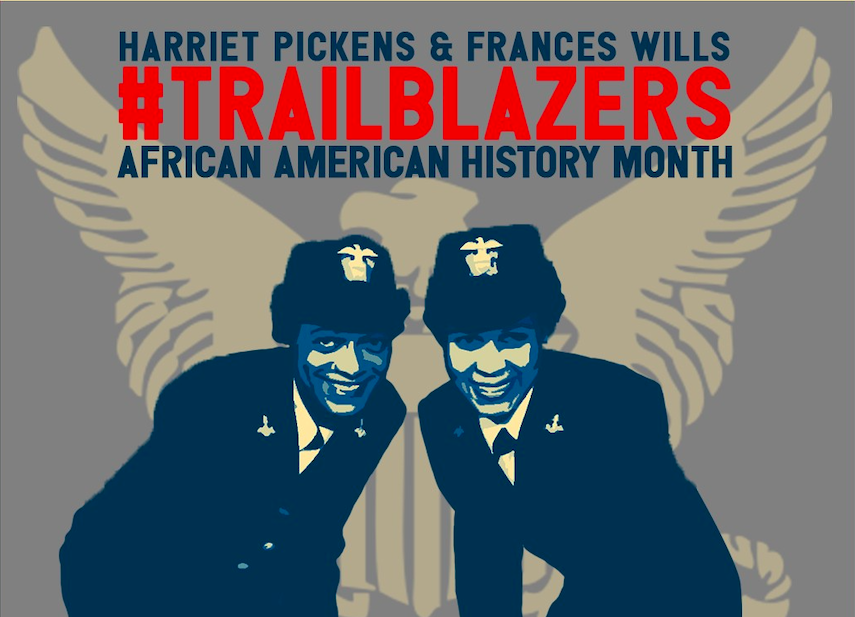With the demands and shifting environment of WWII, opportunities and recognition of African Americans in the Navy marked the twentieth century as an era of “firsts” in favor of racial equality. During the attack at Pearl Harbor (1941), a brave Sailor named Doris Miller took “an unattended deck gun” with no prior weapons training to defend the ship. His courage was recognized in 1942 when he became the first African American to receive the Navy Cross (Doris Miller Memorial). As WWII progressed, there were other African Americans making strides across the fleet. In 1944, the first African Americans were commissioned as officers in the Navy, who became known as the Golden Thirteen. It was composed of 12 Ensigns and one Warrant Officer. Their accomplishment did not come easy; parts of their officer training was changed to make it more difficult. Nonetheless, the Golden Thirteen worked hard together and graduated with an average score of 4, the highest achieved by any class during that time (Naval History and Heritage Command). Their courage and milestones paved the way for more African American Sailors to become officers.
Another first for the Navy towards the end of WWII was the admission of African American women. Thanks to the support of major organizations and key political figures, like First Lady Eleanor Roosevelt, black women now had the opportunity to officially serve. When the Secretary of the Navy, James Forrestal took over he opened the doors for Black women to serve fully integrated with their white counterparts in the WAVES (Women Accepted for Volunteer Emergency Service), unlike the male units which were segregated. Finally, in December of 1944, Harriet Pickens and Frances Wills became the first black women to become WAVES officers. They faced some similar struggles as that of the Golden Thirteen, like having less time in training and the same amount of learning material. Nonetheless, Pickens and Wills exhibited outstanding performances and were able to graduate with their white counterparts. While they were going through training, it seemed that the minds were shifting in terms of racial equality. For example, in Wills’ memoir she recalls her Commanding Officer, Lieutenant Elizabeth Reynard taking action against racist behavior in her command, thus marking a step forward for racial equality. Eventually, the WAVES and the regular Navy opened the way for Black women to enlist (The National WWII Museum). Three years after WWII, Edna Young became the first African American woman to enlist in the Navy and achieve the rank of Petty Officer. Eventually, the Navy would take a more proactive role in bringing equality to the entire fleet.
As time moved on, major milestones were achieved by African Americans personnel throughout the Navy. However, it wasn’t until December 1970, when Admiral Zumwalt laid the foundation for what is now known as Equal Opportunity and took immediate steps to bring equality through the Z-Gram #66. After meeting with Black Navy personnel and their families, Admiral Zumwalt empathized with them by gaining a deep understanding of the amount of discrimination throughout the fleet. Admiral Zumwalt was determined to eradicate racist behavior within the ranks. Through Z-Gram #66, Admiral Zumwalt gave one month for Commanding Officers to adhere to his orders to end discrimination and bring fairness by a number of directives with required changes for all commands. In addition, he created a team that would help him oversee that his orders were being implemented and that Black and other minority Sailors were being treated with respect and fairness (Naval History and Heritage Command).
Today, Equal Opportunity is an essential aspect of Navy life. Our fleet keeps growing on racial diversity and strength thanks to the sacrifices by previous generations of Black Sailors and supporters. Here at NMDF, we encourage you to go to the Naval History and Heritage Command web site to learn more in-depth about the many African American men, women and partners who have contributed to make the Navy a place of equal opportunity and fairness.
“Ours must be a Navy family that recognizes no artificial barriers of race, color or religion. There is no black Navy, no white Navy – Just one Navy – The United States Navy.”
(Admiral E.R. Zumwalt, 1970)
Sources:
Doris Miller Memorial. Doris’ Story. https://dorismillermemorial.org/doris-story/
Naval History and Heritage Command.
- “The Golden Thirteen” https://www.history.navy.mil/content/history/nhhc/browse-by-topic/diversity/african-americans/golden-thirteen.html
- “Z-Gram #66” https://www.history.navy.mil/research/library/online-reading-room/title-list-alphabetically/z/list-z-grams/z-gram-66.html
The National WWII Museum. ‘ “We Made it, Friend” The First African American Female Officers in the US Navy’. https://www.nationalww2museum.org/war/articles/african-american-wave-officers-us-navy

